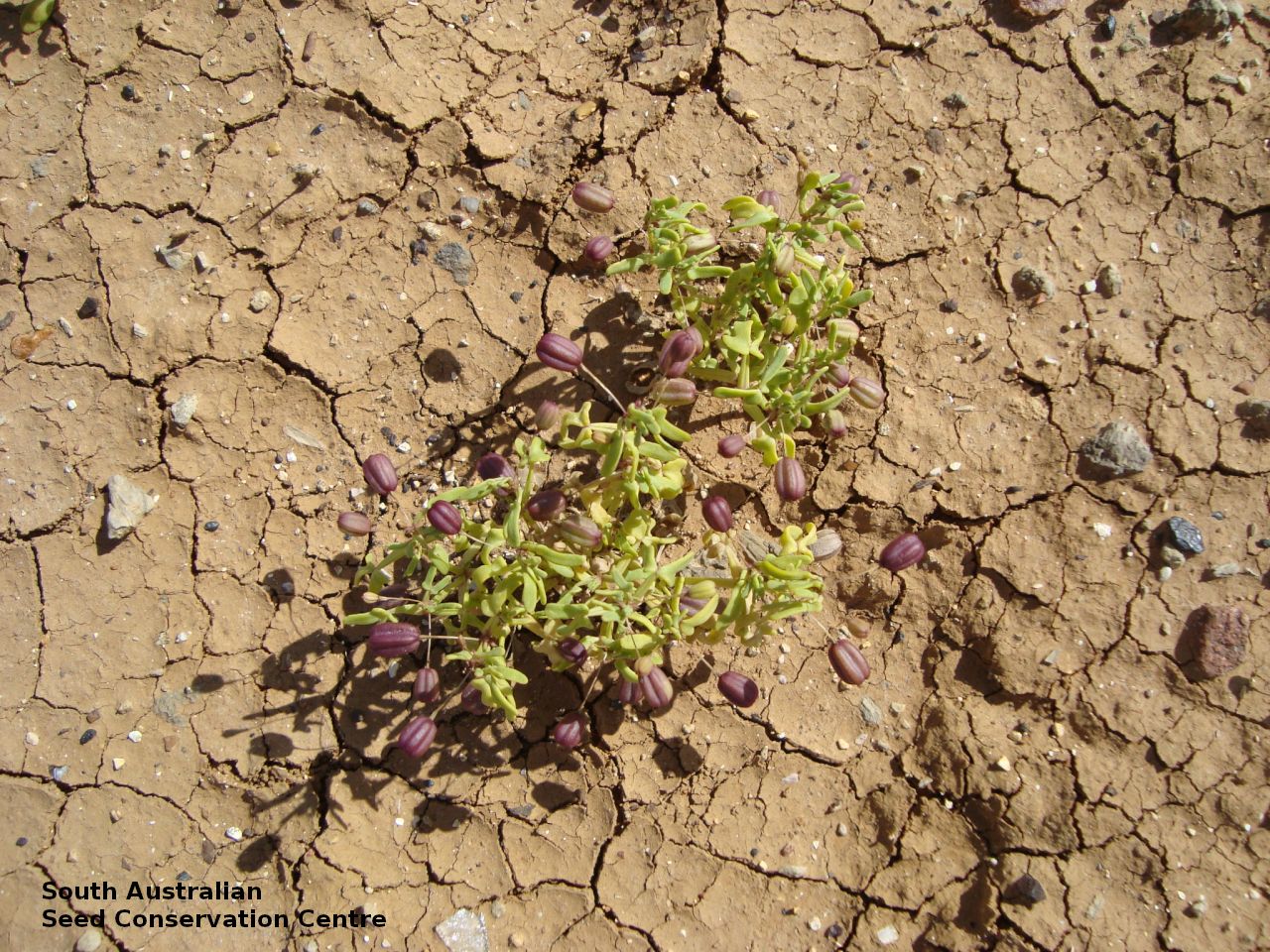
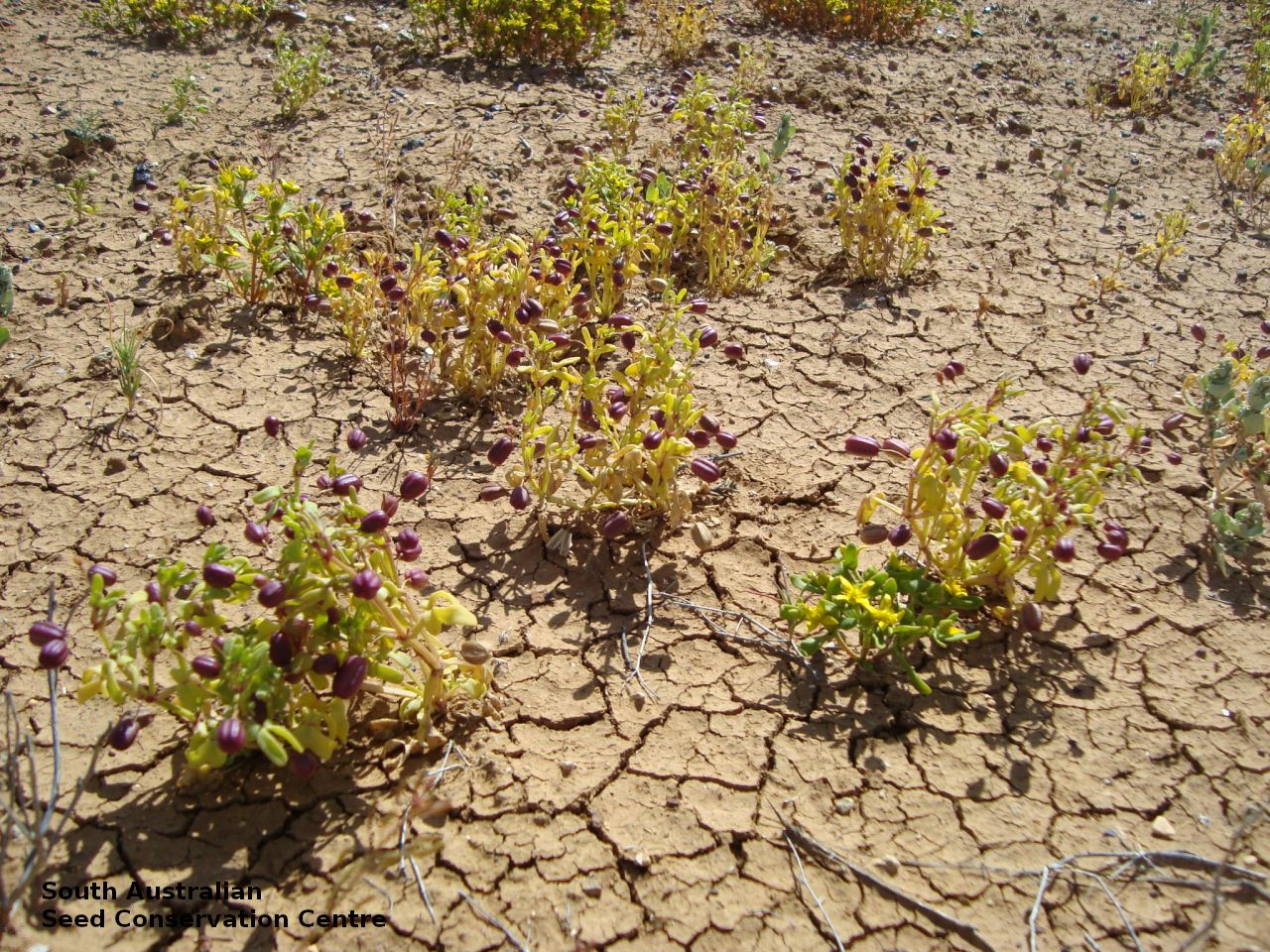

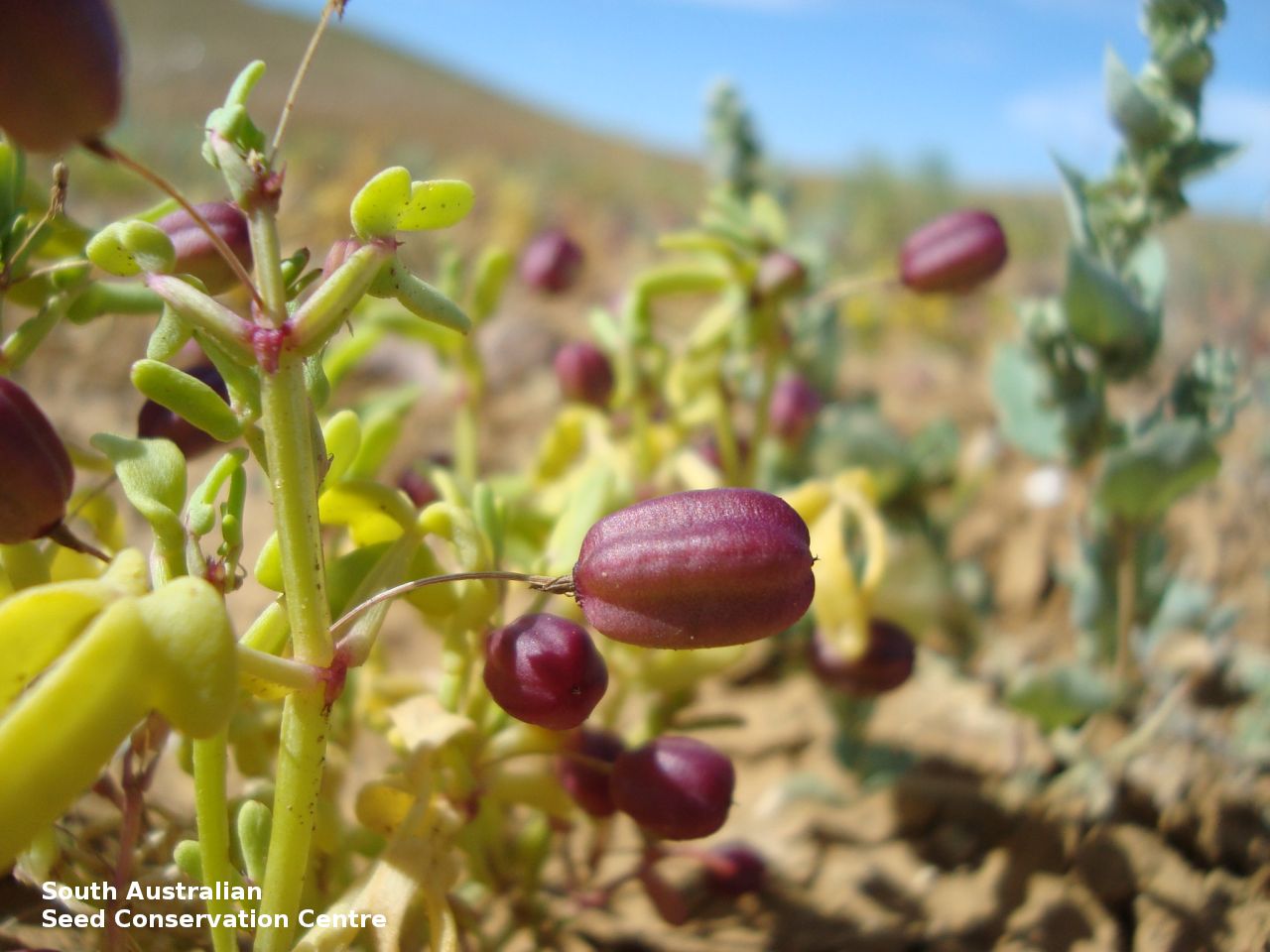
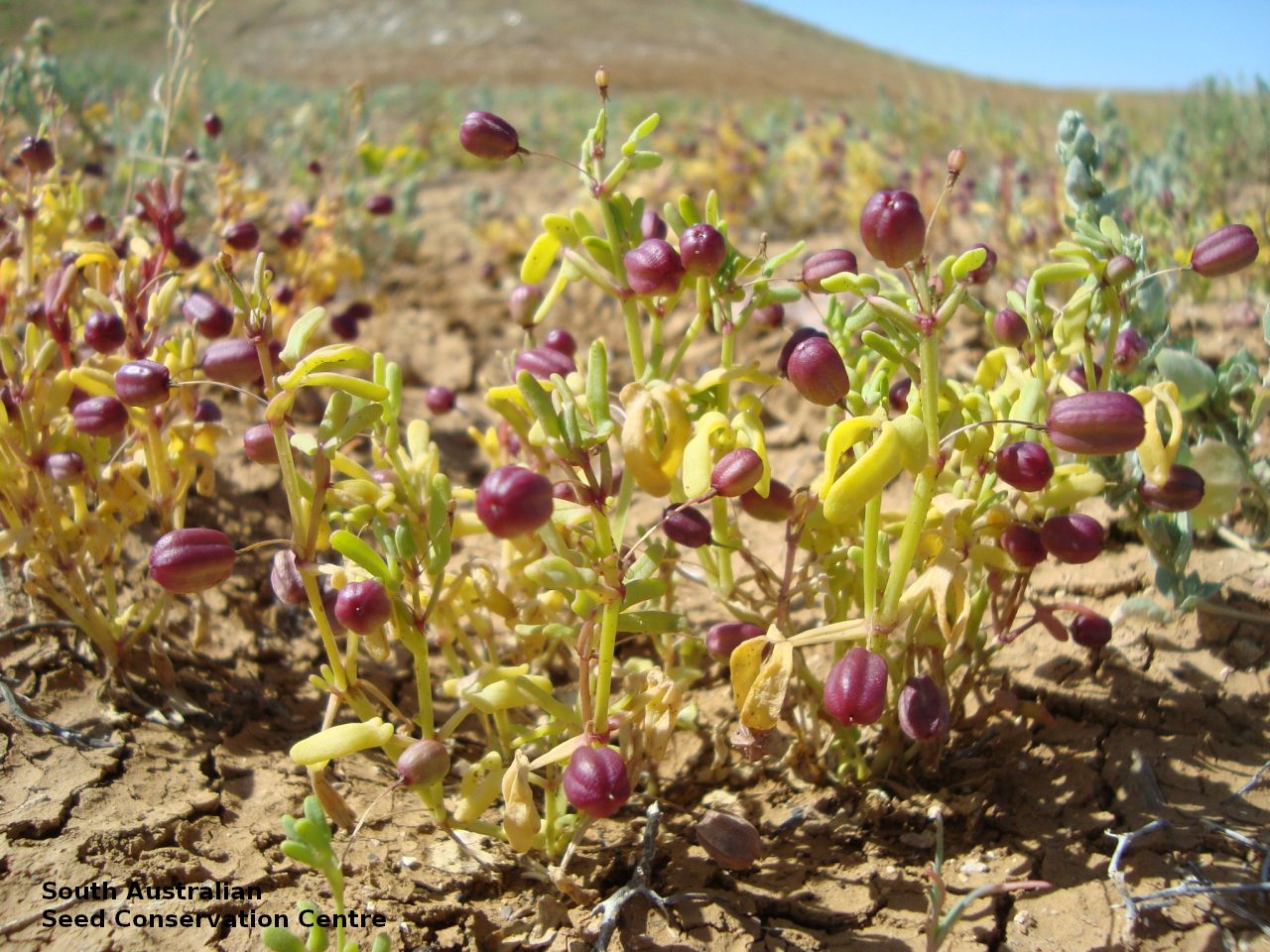
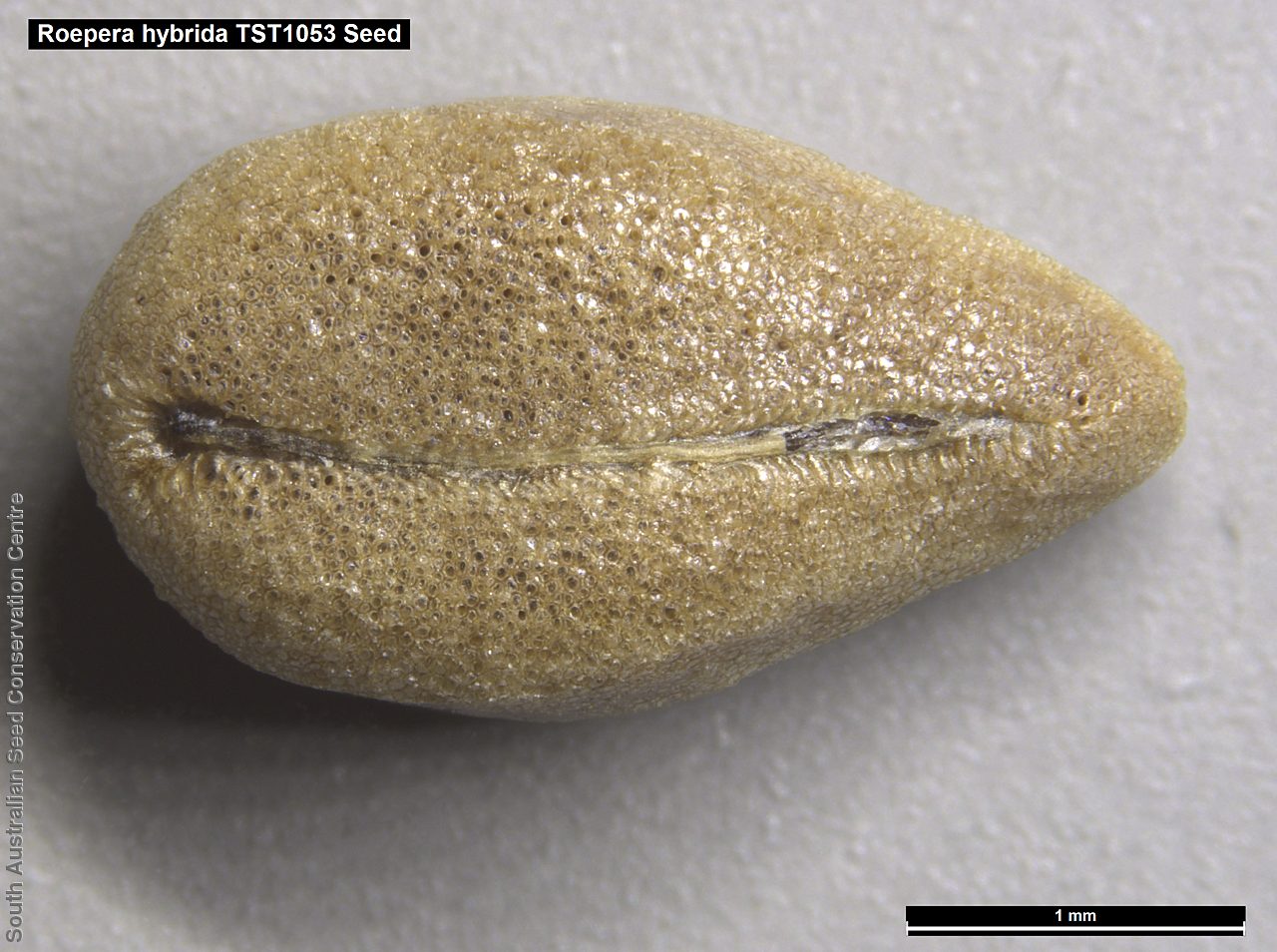
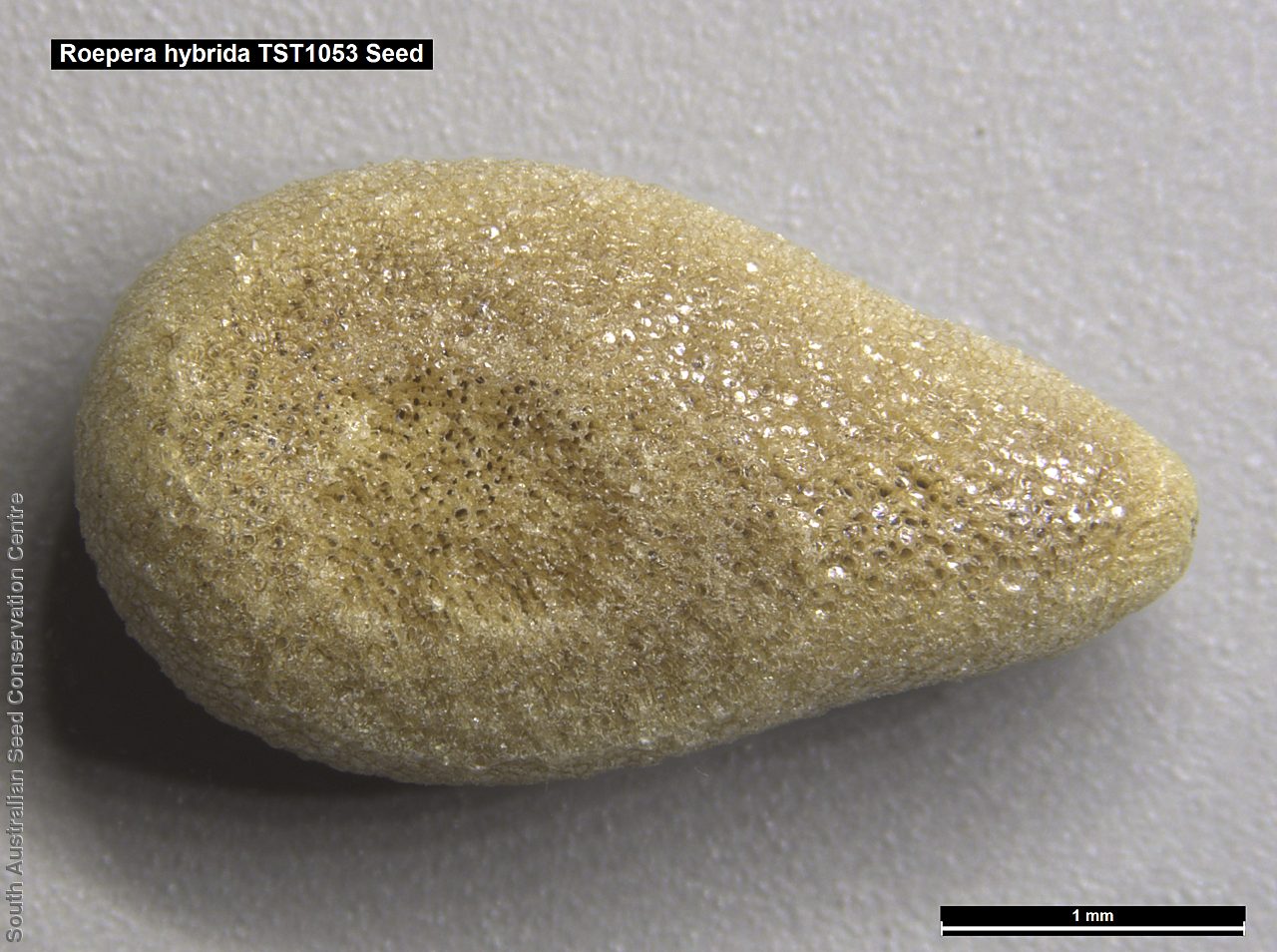
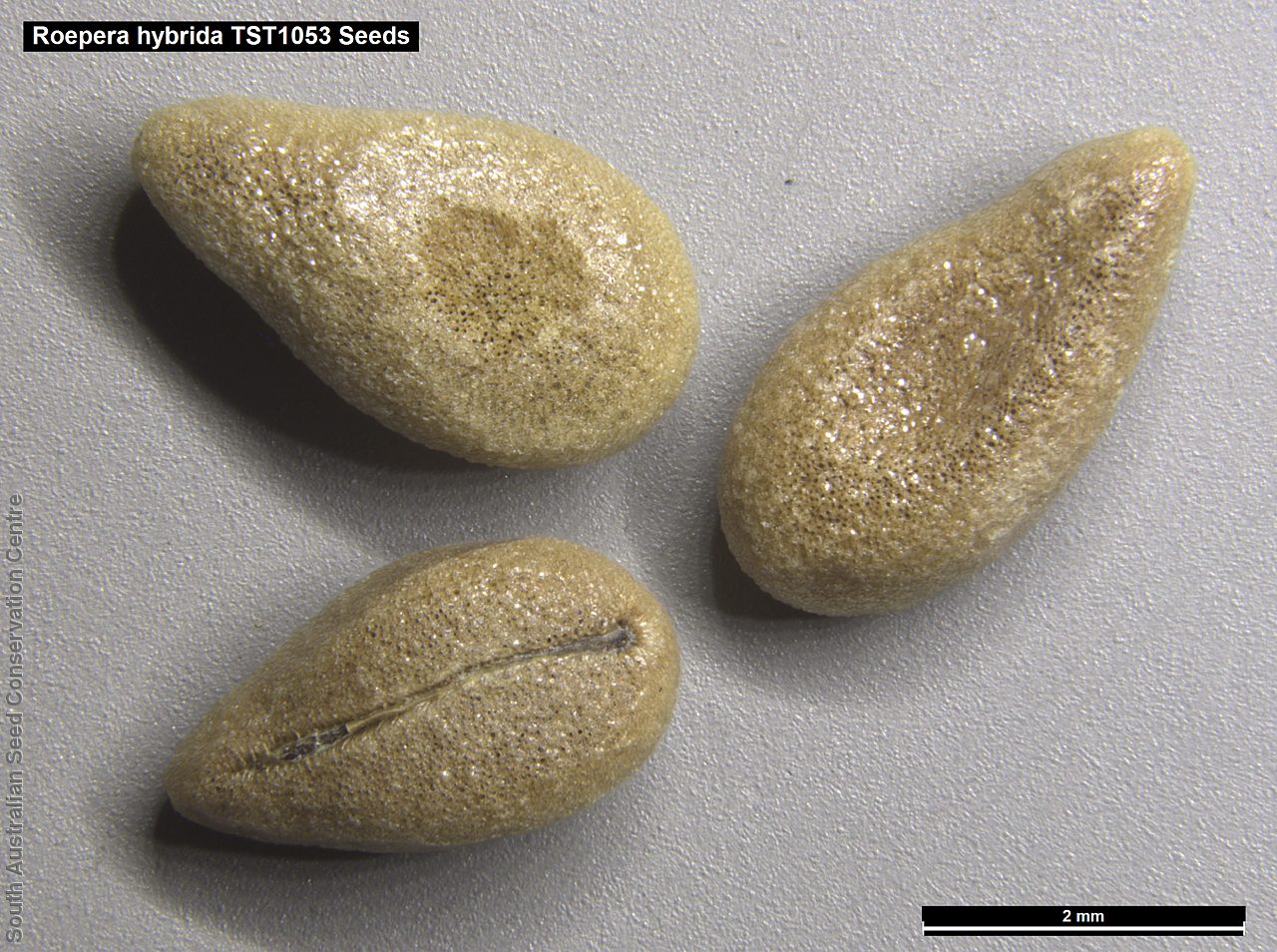


Prior names
Zygophyllum hybridum
Common names
Hibrid Twinleaf
Etymology
Roepera (formally Zygophyllum which is from the Greek 'zygon' meaning pair and 'phyllon' meaning leaf; referring to the pair of leaflets making up each leaf) is named after Johannes August Christian Roeper (1801 -1885), a German botanist and physician. Hybrida from the Latin 'hybrida' meaning hybrid or mongrel and is derived from Greek for insult or outrage, with special reference to lust, hence, an outrage on nature, a mongrel; possibly referring to the hybrid colours of the plant (yellow-green) and fruit (maroon).
Distribution and status
Endemic to South Australia and found in the north central part, growing on clay soil of gibber plains, but only appears in very wet years. Native. Uncommon in South Australia.
Herbarium regions: Lake Eyre, Flinders Ranges
AVH map: SA distribution map (external link)
Plant description
Erect annual herb to 20 cm high. Leaves fleshy, leaflets oblong, to 20 mm long, with a broad lobe on the outer side of the base, obtuse at the apex. Inflorescence solitary at each node with yellow flower on a long stalk. Flowering between May and October. Fruits are maroon (maturing to brown) oblong capsule to 10 mm long, rounded at both ends, with 5-angles, on a long erect stalk. Seeds are brown, ovoid to 4 mm long and 2 mm wide. Seed embryo type is spatulate fully developed.
Seed collection and propagation
Collect seeds between July and December. Collect semi-dried and dried capsules by running your hands through the stems of the plant. Mature fruits will come off easily and will have a hard and dark seed inside each segment. Place the capsules in a tray and leave to dry for 1 to 2 weeks, depending on how green the fruit is. Then rub the dried capsules to dislodge the seeds. Use a sieve to remove the unwanted material. Store the seeds with a desiccant such as dried silica beads or dry rice, in an air tight container in a cool and dry place. Seed viability is usually high.
| Location | No. of seeds (weight grams) | Number of plants | Date collected | Collection number Collection location | Date stored | % Viability | Storage temperature |
|---|---|---|---|---|---|---|---|
| BGA MSB | 11,000 (39.68 g) 11,000 (39.68 g) | 100+ | 7-Oct-2010 | TST1053 Lake Eyre | 1-Jan-2012 | 100% | +5°C, -18°C |
Number of plants: This is the number of plants from which the seeds were collected.
Collection location: The Herbarium of South Australia's region name.
% Viability: Percentage of filled healthy seeds determined by a cut test or x-ray.